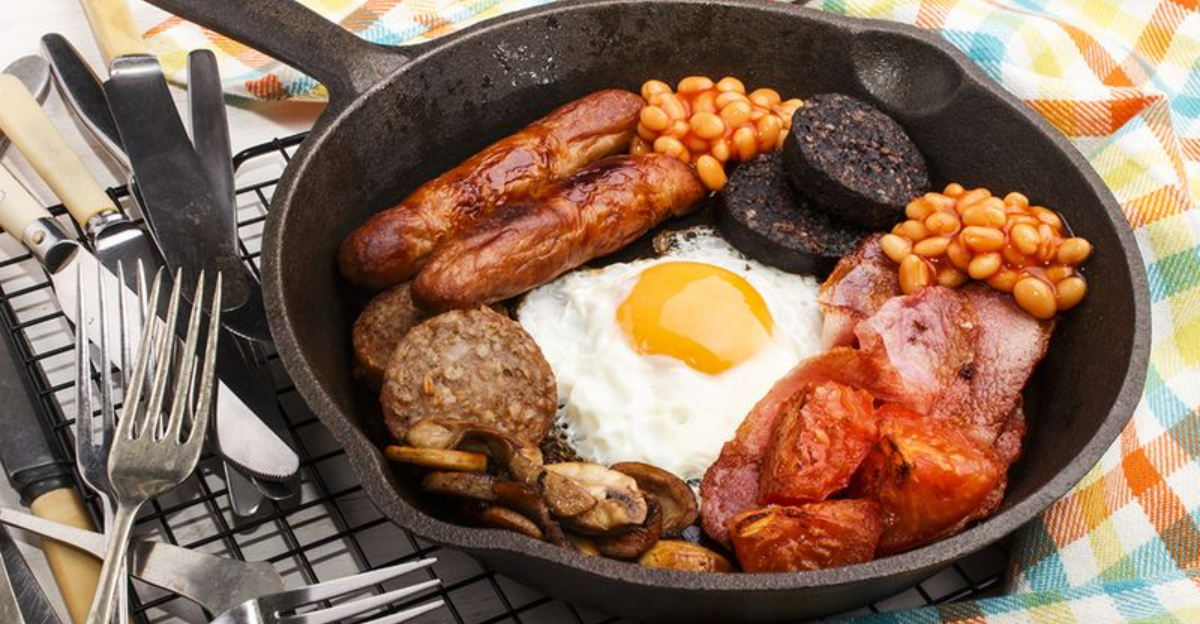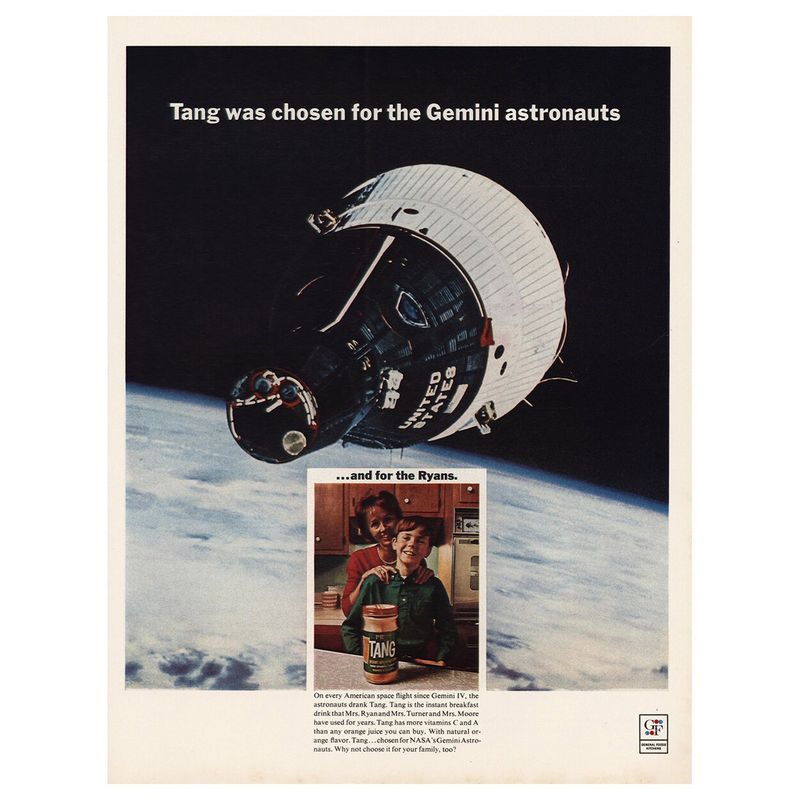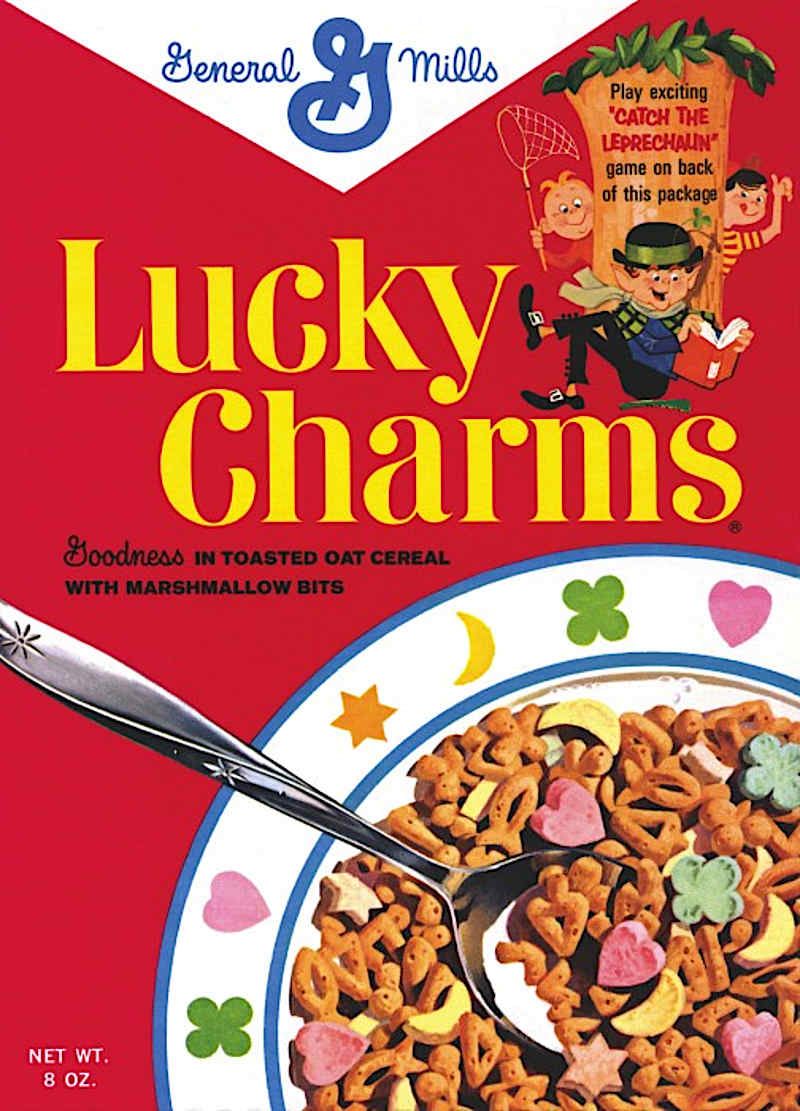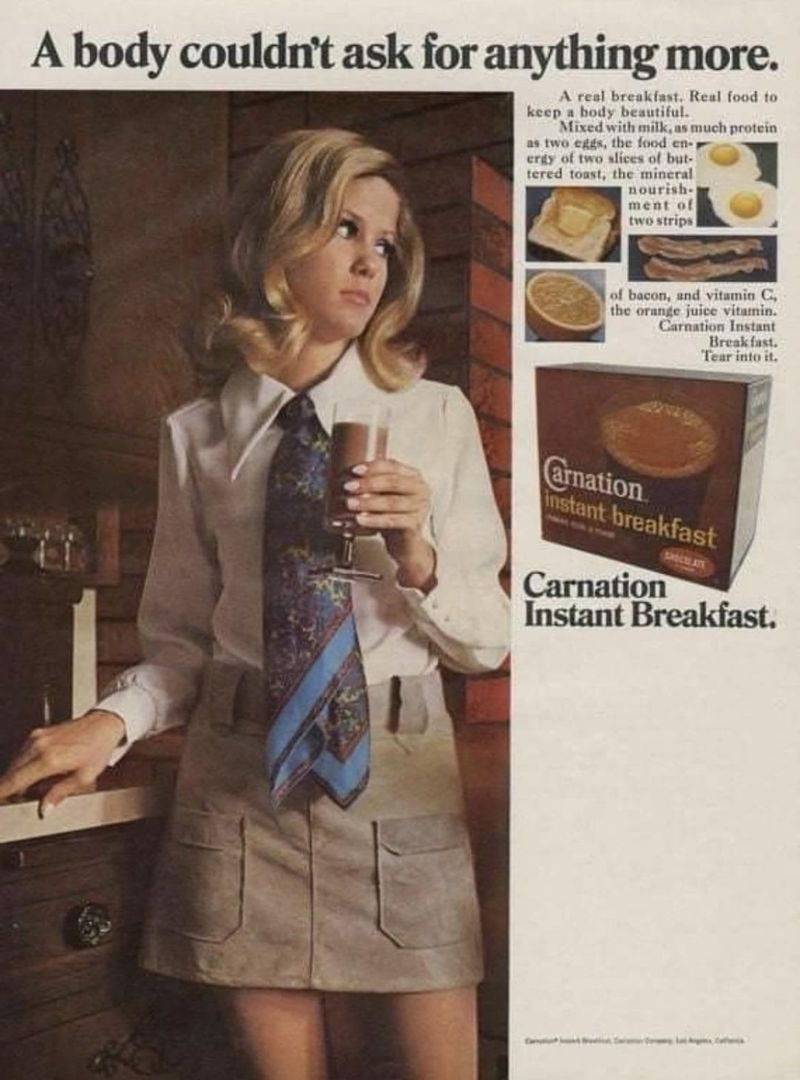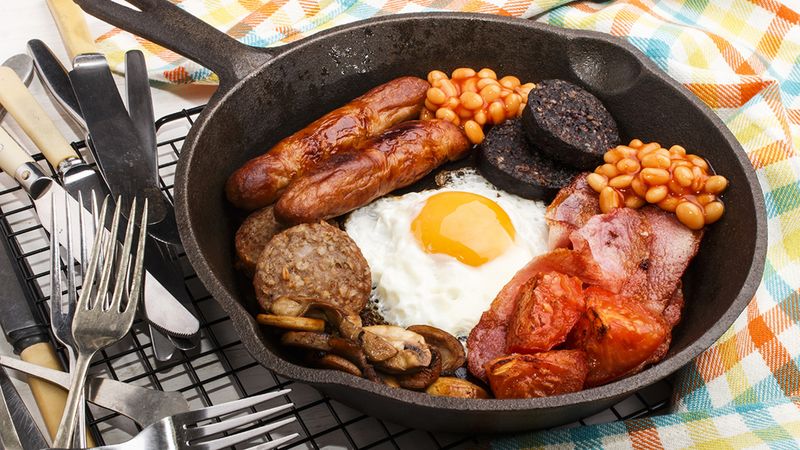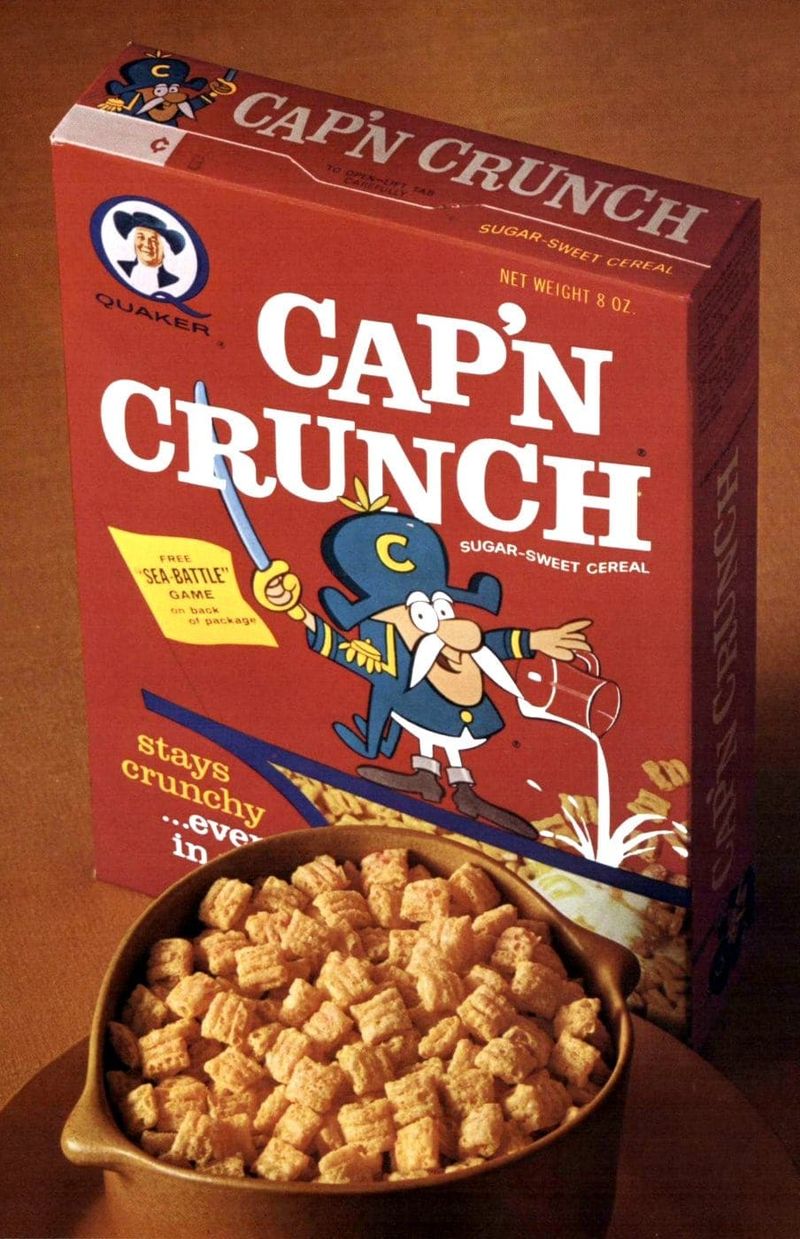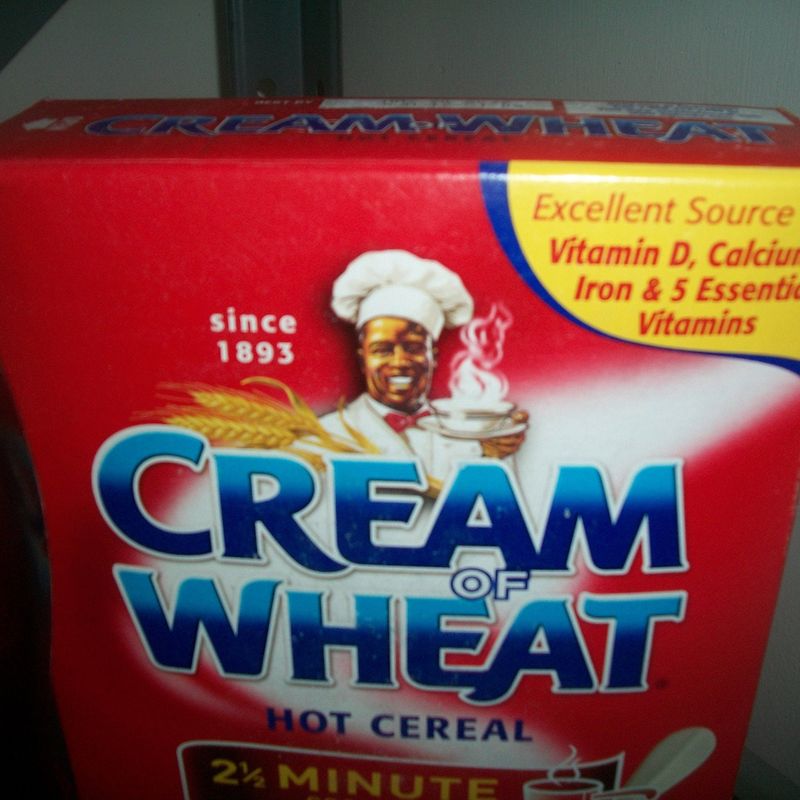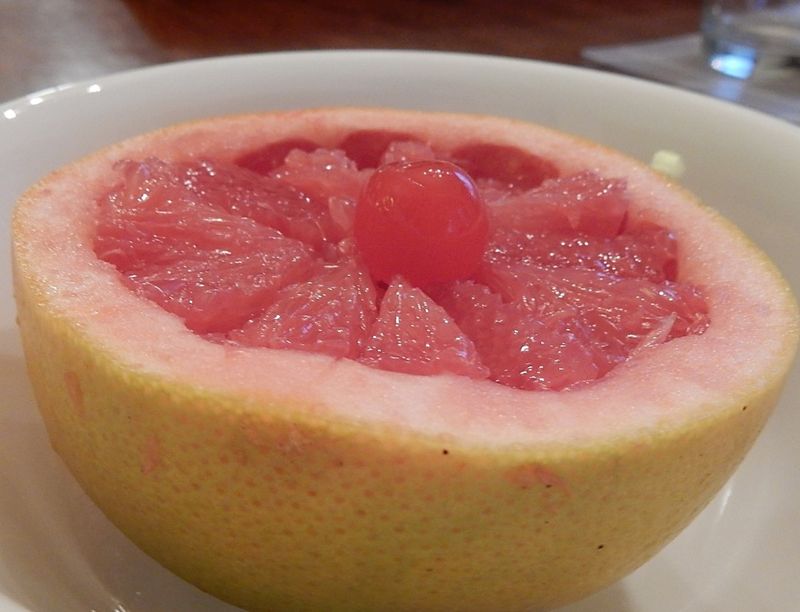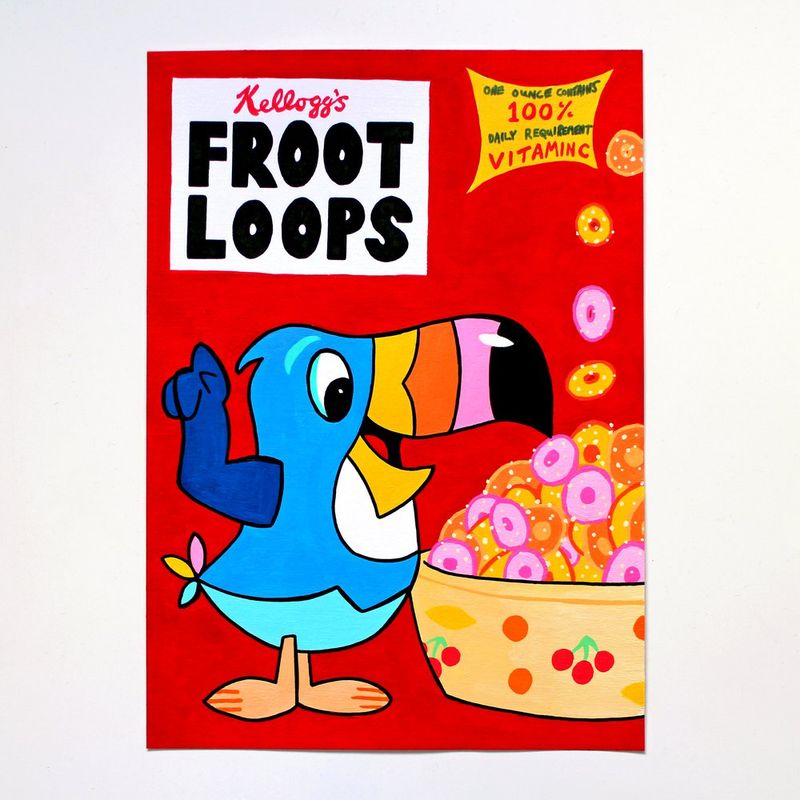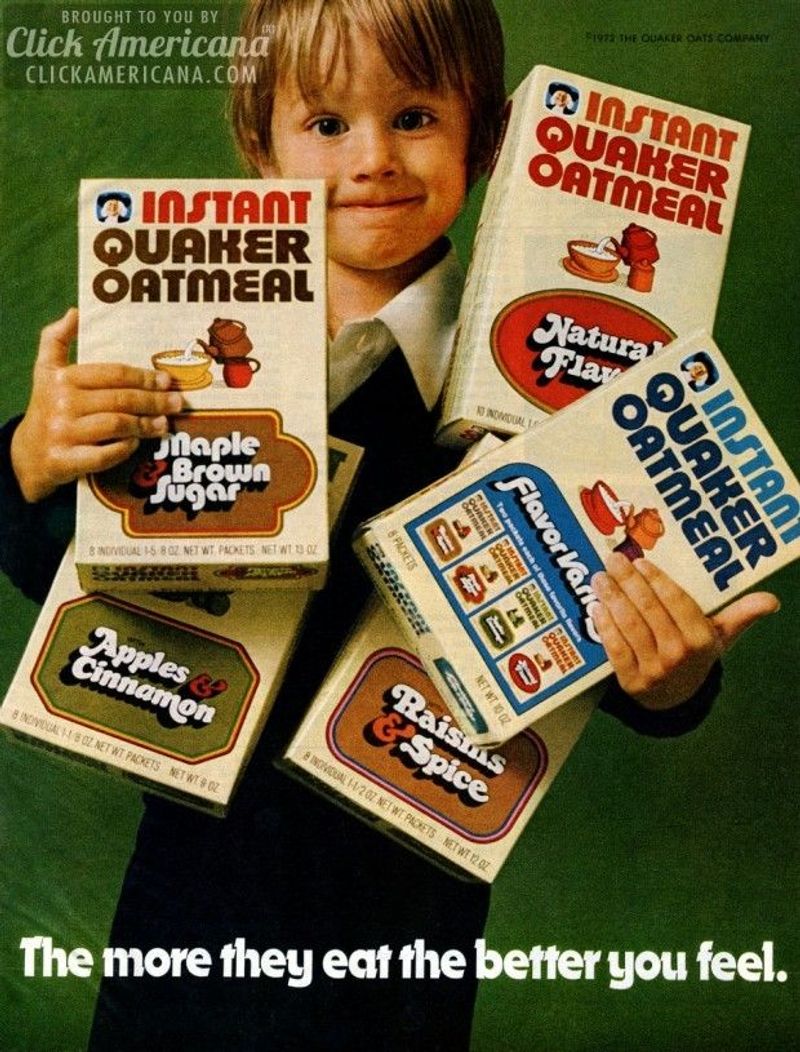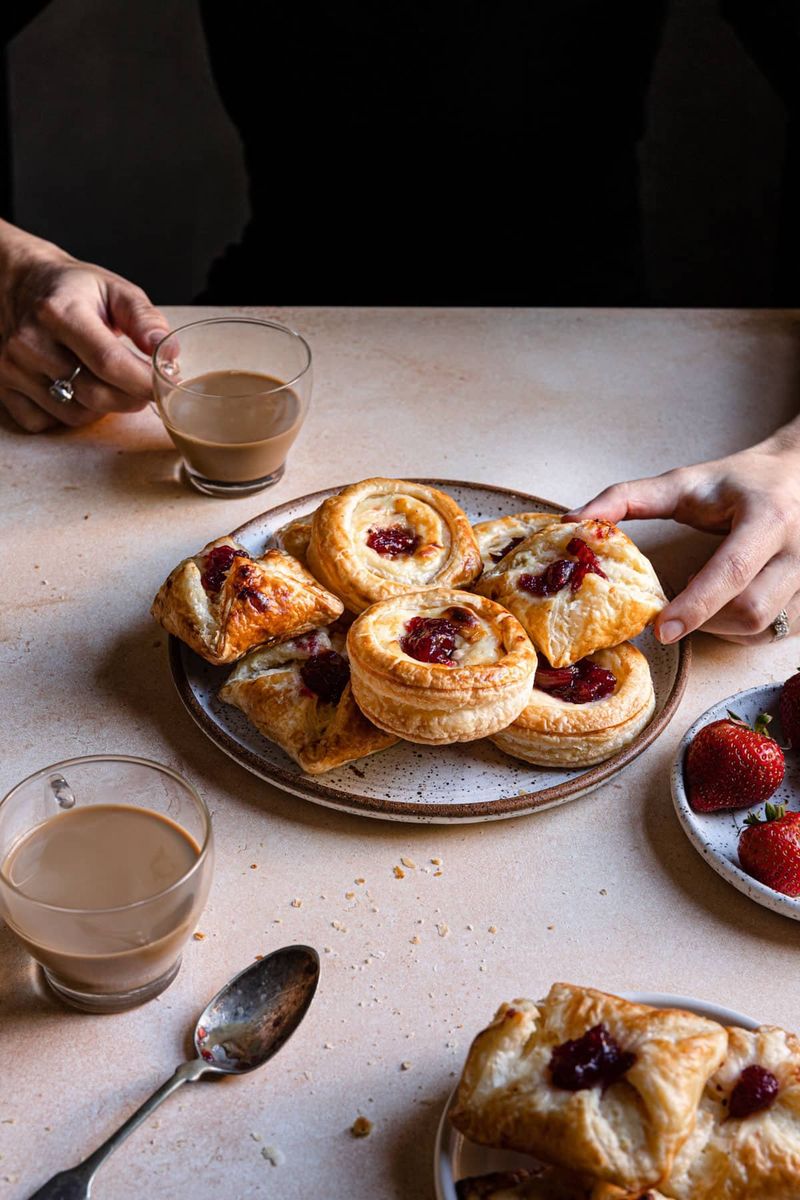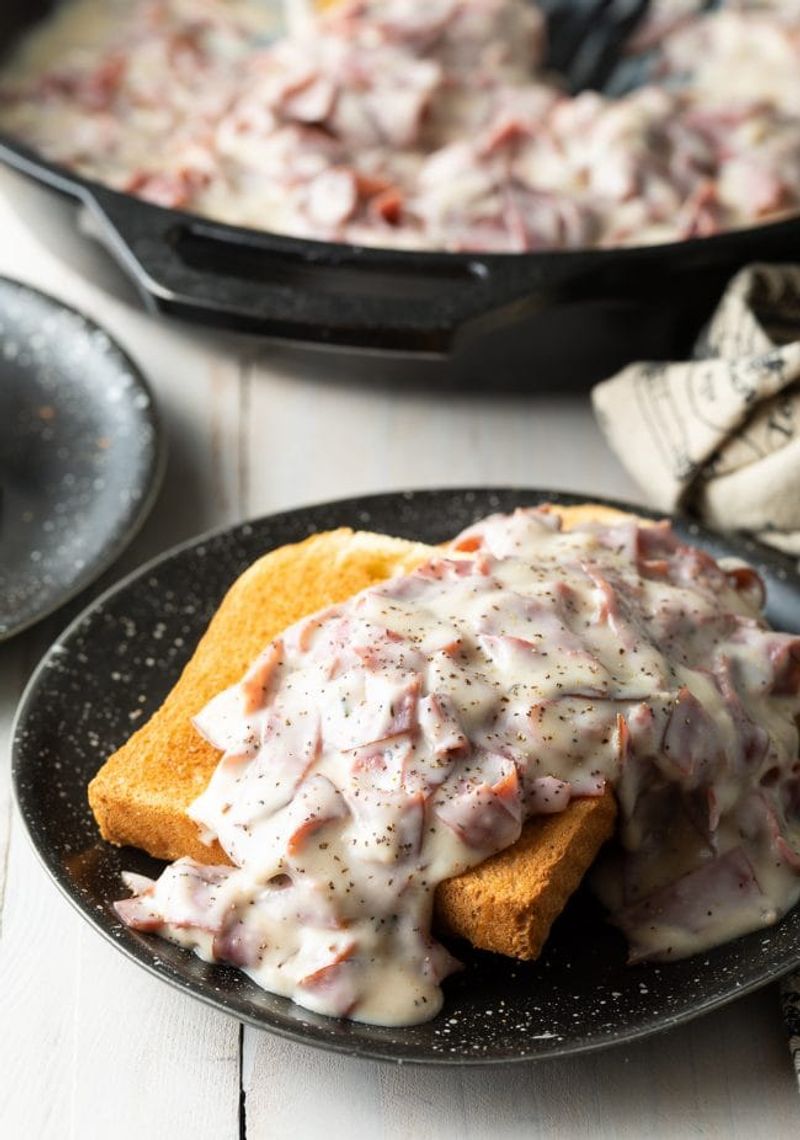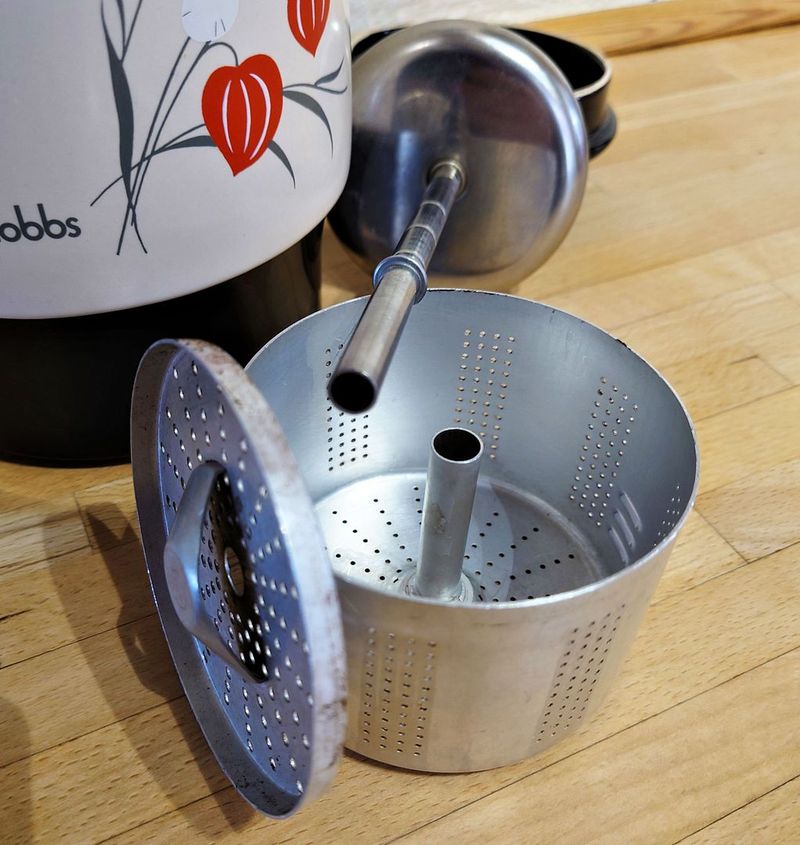Remember when breakfast was simpler yet somehow more adventurous? The 1960s brought exciting changes to American morning meals, with space-age innovations and convenient options taking center stage. From cereals endorsed by cartoon characters to NASA-approved beverages, these morning staples reflected the decade’s optimism, technological advancement, and changing family dynamics.
1. Pop-Tarts: The Toaster Revolution
Fresh from Kellogg’s innovation kitchen in 1964, Pop-Tarts forever changed how Americans approached breakfast on busy mornings. These rectangular pastries with sweet fillings could be popped into the toaster and enjoyed minutes later—no plates or utensils required.
Original flavors like strawberry and brown sugar cinnamon became instant hits with kids rushing to catch the school bus. Parents appreciated the convenience factor almost as much as children loved the frosting.
Fun fact: Pop-Tarts were originally called “Fruit Scones” until marketing executives realized they needed a catchier name to compete in the booming convenience food market.
2. Tang: Breakfast of Astronauts
Orange-flavored Tang rocketed to fame when NASA chose it for the Gemini missions in 1965. Suddenly, children everywhere begged for this powdered drink that promised a taste of outer space with breakfast.
Families stirred the bright orange crystals into water, creating an instant “juice” that paired perfectly with toast or cereal. The space program connection made Tang seem futuristic and scientific—qualities highly valued during the Space Race era.
Many households kept the distinctive round container with its astronaut imagery prominently displayed as a symbol of modern living. Who needed fresh-squeezed orange juice when you could drink what the astronauts drank?
3. Eggo Waffles: Just Heat and Eat
“L’eggo my Eggo!” Though the famous slogan came later, these frozen waffles were already transforming breakfast tables across America during the 1960s. The perfect solution for families embracing convenience without sacrificing the comfort of hot breakfast.
Pop them in the toaster, add a pat of butter and maple syrup, and breakfast was served in minutes. No mixing batter or cleaning waffle irons required. Mothers juggling household duties appreciated the time-saving innovation almost as much as kids loved the crispy exterior and soft interior.
Originally called “Froffles,” these golden discs became a freezer staple that bridged the gap between traditional cooking and modern convenience.
4. Lucky Charms: Magically Delicious Mornings
General Mills struck gold in 1964 with the introduction of Lucky Charms—a cereal that combined mundane oat pieces with something revolutionary: colorful marshmallow shapes called “marbits.” The leprechaun mascot, Lucky, charmed his way into American homes through Saturday morning commercials.
Children across the country sorted through their bowls, often eating the oat pieces first to save the marshmallow treasures for last. Parents might have frowned at the sugar content, but resistance was futile against the magical appeal.
The original marshmallow shapes included pink hearts, yellow moons, orange stars, and green clovers—a palette that seemed as vibrant and optimistic as the decade itself.
5. Carnation Instant Breakfast: The Meal in a Glass
When Carnation introduced its powdered breakfast drink in 1964, it offered the perfect solution for on-the-go families. Simply mix the contents of a packet with milk, and voilà—a complete breakfast in seconds!
Marketing campaigns touted its nutritional benefits, claiming it contained the protein of two eggs, the vitamin C of orange juice, and the minerals of two strips of bacon. Mothers worried about their children skipping breakfast could rest easier knowing they’d at least consumed this nutrient-fortified beverage.
Available in chocolate, vanilla, and strawberry flavors, it bridged the gap between traditional breakfasts and the fast-paced lifestyle that was becoming increasingly common in American households.
6. Bacon and Eggs: The Classic That Never Faded
While newfangled breakfast options multiplied, the tried-and-true combination of bacon and eggs remained the gold standard of American breakfasts throughout the 1960s. Sizzling bacon strips and eggs—whether scrambled, fried, or over-easy—represented tradition amid changing times.
Weekend mornings often found families gathered around the table enjoying this protein-packed start to the day. Dad might read the newspaper while Mom tended to the skillet, a domestic scene captured in countless advertisements and TV shows of the era.
The distinct aroma of bacon cooking became so iconic that it represented home itself—a sensory anchor in a decade characterized by rapid social and cultural change.
7. Cap’n Crunch: Setting Sail at Breakfast
Ahoy, breakfast lovers! When Quaker Oats launched Cap’n Crunch in 1963, they created a cereal that stayed crunchy in milk—a technological marvel of the time. The square, yellow corn and oat pieces were designed to hold their texture, addressing a common cereal complaint.
Children were drawn to the nautical adventures of Cap’n Horatio Crunch and his crew aboard the S.S. Guppy. Parents might have winced at the sugar content (nearly 50% by weight), but the Captain’s charm proved irresistible during Saturday morning cartoon commercial breaks.
The distinctive mouth-shredding texture became a childhood rite of passage—many adults from the era still remember the sweet reward that came with slightly scratched palates.
8. Cream of Wheat: Warm Comfort in Changing Times
Steaming bowls of Cream of Wheat provided morning comfort for many Americans during the turbulent 1960s. This simple hot cereal, made from farina wheat, represented stability and nourishment when much of society seemed in flux.
Mothers and grandmothers served it topped with butter, sugar, and milk—sometimes with a sprinkle of cinnamon for special occasions. The iconic chef logo on the box (problematic by today’s standards) was a familiar sight in pantries across America.
During cold winter mornings, children would gather around kitchen tables, warming their hands on bowls of this smooth porridge before heading off to school. Its mild flavor made it the perfect canvas for personalization—raisins, honey, or maple syrup could transform the basic recipe.
9. Pancakes from Bisquick: Mix, Pour, Flip
Sunday mornings in 1960s America often featured the distinctive yellow Bisquick box on kitchen counters nationwide. This revolutionary baking mix simplified pancake-making to just adding water, transforming ordinary parents into short-order breakfast cooks.
Families gathered around as Mom or Dad flipped golden discs onto waiting plates. The ritual of stacking them high, adding a pat of butter, and drizzling with maple syrup (or more commonly, maple-flavored syrup) became a weekend tradition for middle-class households.
Bisquick pancakes represented the perfect balance between convenience and homemade goodness—quick enough for busy lives yet still carrying the emotional satisfaction of fresh, hot breakfast made with love.
10. Grapefruit Half: The Dieter’s Delight
Long before smoothies and protein shakes, the humble grapefruit half was the breakfast of choice for weight-conscious women of the 1960s. Served in special scalloped-edge bowls with a maraschino cherry centered atop, this tart treat had an air of sophistication.
Specialty serrated spoons designed specifically for scooping out the juicy segments became common wedding gifts. Homemakers would often sprinkle the surface with sugar or honey to temper the tartness—diet consciousness only went so far!
Women’s magazines touted grapefruit’s fat-burning properties, claiming it contained special enzymes that melted away pounds. While this was mostly myth, the grapefruit half became a symbol of feminine self-discipline during an era obsessed with maintaining the perfect figure.
11. Froot Loops: Toucan Sam’s Colorful Circles
Kellogg’s introduced these vibrant, fruit-flavored rings in 1963, creating an instant sensation with children mesmerized by the rainbow of colors in their breakfast bowls. Despite the name suggesting different fruit flavors, all loops actually tasted identical—a clever marketing illusion!
Toucan Sam and his distinctive “Follow your nose!” catchphrase became breakfast table companions for kids across America. Parents might have questioned the nutritional value, but the brightly colored loops perfectly matched the psychedelic aesthetic beginning to influence American culture.
The cereal represented childhood freedom in a bowl—permission to play with food and enjoy something purely for its visual appeal and sweetness. Many baby boomers still recall fishing for specific colors with their spoons before school.
12. Quaker Instant Oatmeal: Tradition Meets Convenience
Introduced in 1966, Quaker Instant Oatmeal packets revolutionized the morning routine by reducing cooking time from 30 minutes to just 90 seconds. The smiling Quaker man—a symbol of honest simplicity—reassured families that modern convenience didn’t mean sacrificing wholesome tradition.
Available in original and maple brown sugar flavors, these packets became lunchbox staples for factory workers and briefcase essentials for early business travelers. The individual portions eliminated measuring and reduced cleanup, appealing to increasingly busy households.
Mothers appreciated how even older children could prepare it themselves with just hot water, fostering independence while ensuring they had something warm in their stomachs before school. The distinctive rectangular packets became symbols of practical American ingenuity.
13. Danish Pastries: European Sophistication
Nothing said “continental sophistication” in 1960s America quite like offering guests Danish pastries for breakfast. These flaky, buttery treats filled with fruit, cheese, or almond paste represented European refinement during a time when Americans were developing more cosmopolitan tastes.
While truly authentic Danish pastries were found in urban bakeries, suburban housewives could purchase frozen versions or even make reasonable facsimiles using canned crescent roll dough. Serving them on special occasions with coffee in a percolator signaled that a hostess was up-to-date on entertaining trends.
The spiral shape with fruit filling became particularly iconic, often featured in women’s magazine spreads about elegant brunches. These sweet treats bridged the gap between everyday toast and special occasion indulgence.
14. Creamed Chipped Beef on Toast: S.O.S. at Home
Veterans returning from military service brought this hearty breakfast into civilian homes, where it became a staple comfort food throughout the 1960s. Thinly sliced dried beef in creamy white sauce served over toast was filling, affordable, and easy to prepare—important qualities during economically uncertain times.
Affectionately (or not-so-affectionately) known as “S.O.S” or “Same Old Stuff” (in polite company), this dish represented practical American cooking without pretension. Families stretched their food budgets with this protein-rich meal that could feed many mouths for minimal cost.
Stouffer’s even introduced a frozen version, bringing convenience to this already simple dish for busy households. The sight of the distinctive glass jar of Armour dried beef became a common fixture in many pantries.
15. Coffee with Percolator Theater
The rhythmic bubbling of electric percolators provided the soundtrack to 1960s mornings across America. Families would gather around to watch the hypnotic dance of coffee through the glass knob atop these chrome-plated appliances—a daily performance that engaged all senses.
Adults typically drank their coffee with cream and sugar, often from matching ceramic mugs or delicate cups with saucers for more formal occasions. The distinctive aroma would fill the kitchen, signaling the official start to the day for millions of households.
Children weren’t regular coffee drinkers yet, but many recall the special occasion when they were finally allowed a heavily-creamed cup—a rite of passage into the adult world. For many, the percolator’s distinctive gurgling remains the sound of childhood mornings.
